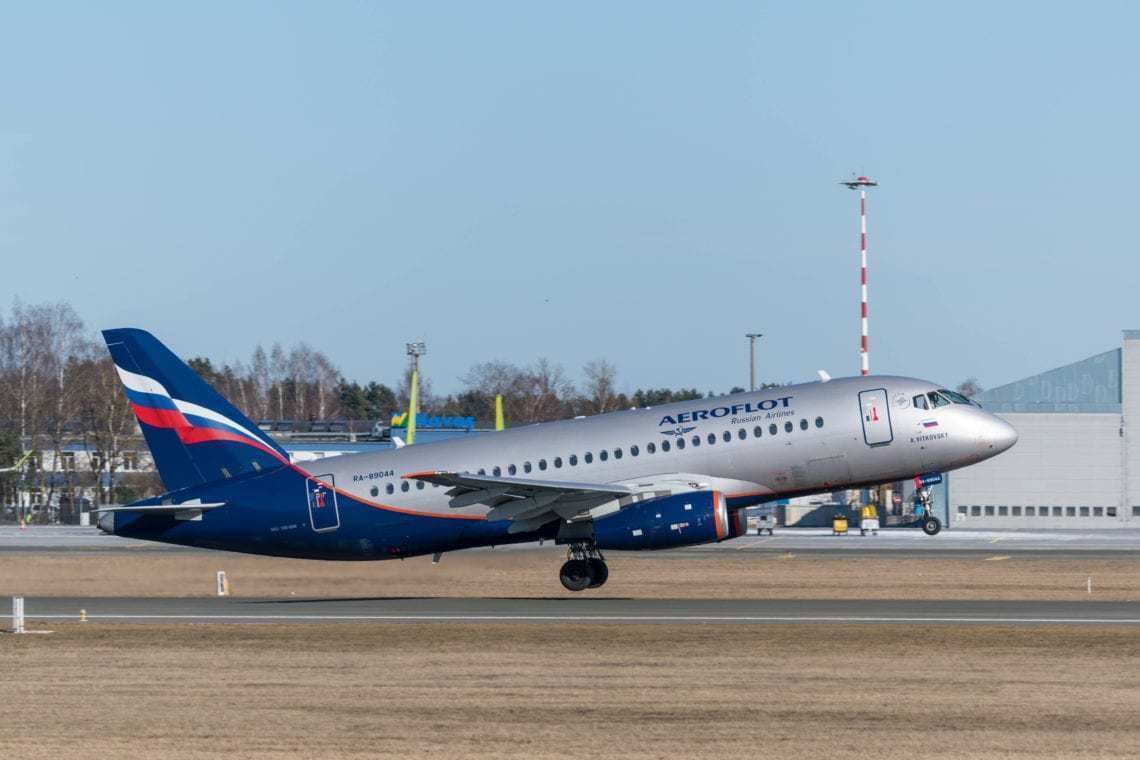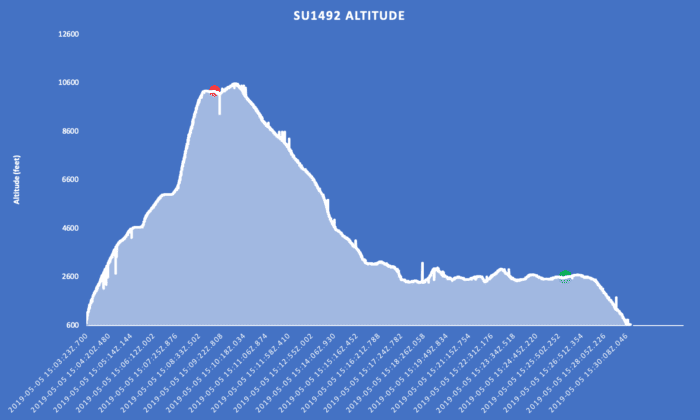Yesterday, the aviation community was saddened to hear about the fatal crash landing of an Aeroflot Superjet 100. As is often the case in the hours succeeding the event, the initial details were sketchy. As such, Simple Flying has trawled through the internet to bring you the most up to date facts regarding flight SU1492.
The accident
The accident took place yesterday, on the 5th of May. Aeroflot flight 1492 was due to fly to Murmansk following departure from Moscow. The flight took off at 1503 local time.
Just six minutes later, the first signs of trouble were spotted as FlightRadar24 reports the aircraft started to squawk 7600. 7600 is the code for radio failures, indicating to controllers that the pilot cannot communicate. At this time, according to data made available by FlightRadar24, the pilots levelled off at around 10,300 feet above sea level.
At around 1510 the pilots began to descend, with a view to landing back at Moscow. The aircraft levelled off at around 2,600 feet before its final descent into Moscow. It appears as though the aircraft missed its approach, as it turns away from the airfield before coming in for a second attempt at landing.
Bounce on landing
CCTV recordings of the incident shared on Twitter show that the Aeroflot aircraft appeared to bounce down the runway.
As the video is of relatively poor quality, it is hard to see exactly what happens. However, five seconds in on the second bounce, it appears as though the back of the aircraft strikes the ground fairly hard, providing the initial ignition.
A video which is taken from the other side of the aircraft appears to commence around this time, showing the aircraft continuing down the runway engulfed in flames with a huge plume of black smoke trailing.
One thing that strikes as surprising is that the fire crew seem to have a fairly long response time to reach the aircraft. Given that the aircraft was squawking 7700 prior to landing, one would assume that the fire crew would already have been en route to respond in a 'just in case' capacity. This is often the case when an aircraft lands after declaring an emergency. Instead, all the footage shows that at least 60 seconds after the aircraft came to a halt, the fire service was still not in attendance.
Immediate aftermath
The death toll of the incident now stands at 41 out of the 78 people on board. As such, only 37 people are thought to have survived the incident. There have been reports that passengers slowed the evacuation procedure by stopping to collect personal effects.
Aeroflot Stewardess Tatyana Kasatkina survived the accident. She told The Sun: "Everyone was shouting that we were on fire. But there was no fire inside the cabin at this moment… I kicked the door out with my leg and pushed out the passengers so as not to slow the evacuation. Just to hurry them up I grabbed each of them by the collar from the back…”
Footage of the aircraft's recovery posted today appeared to show that the black boxes from the aircraft have been located. It has been reported that a lightning strike was involved in the incident. Some of the video footage appears to show that whatever caused the aircraft to return to the airport was not directly responsible for the fire after landing.
The Simple Flying team will continue to report on major updates to this story. Our thoughts are with the victim's families and all those affected by this tragic accident.



